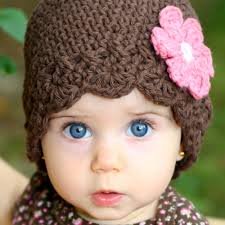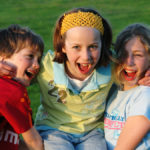Teaching Toddlers and Child Development at age 1-2
Child development and teaching in the toddler stage is very crucial in the overall development of any child. This stage is usually between the ages of 1 to 3 years, this post will focus on the child development stages between 1 and 2 years of age. This post will also focus on teaching methods for both mental and physical areas of your child.
Mental Development
The following seven points are things you as a parent or guardian can do with your toddler, teaching them valuable principles to aid in child development during this stage.
1. Ask your toddler to name objects and body parts. Studies show that engaging your toddler in these types of exercises increases brain function and activity, causing the brain to develop neural pathways associated with memory and cognitive recognition.
2. Read daily to/with your toddler. The saying “reading is fundamental” is an understatement. Reading to your toddler during this stage of child development increases the brains learning and comprehensive capacity. It is vital in teaching your child the proper use of the language they will use for the rest of their lives.
3. Playing simple match and puzzle games. It is very important at this stage to help your child develop a love for learning. Whether a child does well in a certain subject in school later on is as much mental as it is actual. By playing simple puzzle and match games, you help your child to develop the focus, reasoning, and recognition skills they will need later on in a manner that is fun and entertaining.
4. Talking with and to your child. Contrary to popular belief, using “baby talk” with your toddler actually impedes child development. When you speak with you child, instead of say “mama or dada” say “mom, dad, mother, father”. Using the proper pronunciation of words will force your child’s brain to develop the proper speech pathways and thus develop better speech patterns.
 5. Letting your child help in feeding and dressing themselves. Knowing how to make good decisions is not magic or luck of the draw. By getting your toddler involved in their dressing and eating routines, you’re teaching them valuable decision making skills. You help their brain to understand not only what goes into making a decision, but also what results follow from making those decisions.
5. Letting your child help in feeding and dressing themselves. Knowing how to make good decisions is not magic or luck of the draw. By getting your toddler involved in their dressing and eating routines, you’re teaching them valuable decision making skills. You help their brain to understand not only what goes into making a decision, but also what results follow from making those decisions.
6. Respond to “wanted” behavior equally with “unwanted behavior”. Teaching your child the difference between right and wrong, between acceptable behavior and unacceptable behavior is without a doubt essential for proper child development. Teaching the principles of right and wrong equally during this stage of development helps the toddler develop a balanced understanding of what makes up the concept of limitations.
7. Encourage creativity and exploration. Teaching your child for example to draw, paint, and sing helps to stimulate the creative portion of the brain. Taking walks in the park helps the brain to make connections with things they already know, while creating new pathways to understand and index the things they don’t know.
Physical Development
At this stage of development, your child will be mobile which means he or she will come across dangers that were not possible when your child was more sedentary. Dangers at this stage can happen quickly and without warning so keep a close watch. Here are a few tips that will help in your child’s physical development.
1. Play with your child. Playing with your child help them develop reflex skills as well as stimulate lung and muscle growth. As the child plays their heart rate increases which increases the need for more oxygen, this in turn increases their lung capacity as their body takes in more oxygen.
2. Lock doors that lead to dangerous (to them) places like the basement or garage and place gates on stairs. Keeping your child safe in the one area that we think is safe automatically is very important for good physical child development and teaching them that these areas are off limits, helps reinforce their mental development.
3. Keep sharp objects like knives, scissors, and work tools out of eye site and reach of your toddler. Children of all stages are naturally curious and seeing objects for the first time can lead them to want to touch and play with that object not understanding the danger.
4. Keep small kitchen appliances like toasters, hot plates, and irons, out of the reach of children and turn all pot handles inwards towards the stove.
5. Keep your child seat facing the back of the vehicle as long as you possibly can. Recent studies have shown that this is the best way to keep you child physically safe. Your toddler should remain in the child seat until they reach the maximum height and or weight limit for that particular child seat set by the manufacturer. Once your toddler reaches this stage, they are ready to face forwards using a seat belt or child safety harness.
6. Give your child plain water and milk (dairy, soy, rice, almond or cashew) rather than sugary drinks like soda, fruit juice, and fruit drinks.
7. At this stage, toddlers don’t grow as quickly and require less solid food, so if they develop picky and erratic eating habits don’t worry too much about it just give them a selection of healthy foods and allow them to choose what they will eat.
Keeping these principles in mind and practicing them can help your child between the ages of 1 and 2 develop in the way they should. It might seem like a lot at first but as you do them more and more, it will become second nature to you and your child. Child development and teaching may not be easy, but with these principles it certainly is possible.






